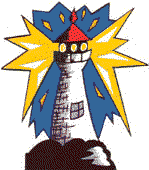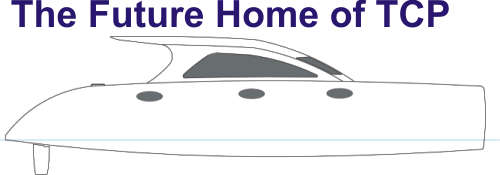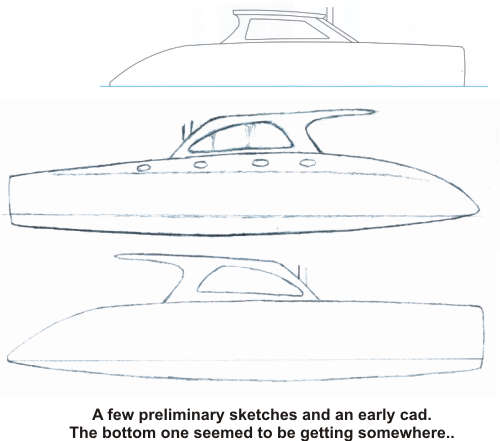
|
|
We
are the People that are FREE! |

|
|
From
The Coastal Passage, issue #29 |
|
PASSAGE PEOPLE TAKES A LOOK
AT BOBS BAREBONES PROJECT |
|
Whilst
this project occupies the editors time Passage People may have
to be restricted to pics and stories of those who stop by to
help! Want your pic on the back page? Bring sandpaper! |

|
It first started as a realisation
that I was talking myself into a plan that I was meant to be
researching for others. In TCP # 13 I did an article “The
Multi Eye for the Mono Guy”. The piece was a great success
and since I posted it to the web site (see technical articles)
has been a steady download for tens of thousands of readers.
At that time two things had become apparent, first was that TCP
was definitely not going to go away. My little hobby had gone
wrong and I was no longer a happily retired person, aspiring
to peaceful old fart status and.. it was becoming just as clear
that our beloved old “WhiteBird” was exactly the wrong
kind of boat for this now uncontrollable life style. Big thundering,
high maintenance steely with not quite enough room to fit the
gear for publishing TCP. A great boat for our original purpose,
blue water with a circumnav up my sleeve, but a total encumbrance
for our new reality, coastal cruising and workaboard. Besides,
(incidentally of course) I had been on a few faster boats and
I liked it! |

|
So, what is the perfect solution?
First on my list of required attributes was low maintenance.
That means plastic. Now before I start WWIII with the fans of
alloy or other materials, I grant there is some subjectivity
in the choice but overall a glass fibre composite fits the bill
best.
The new boat would have to have room for the computers and printers
used to publish TCP and still be comfortable for long term liveaboard.
A catamaran of about 40 feet would have the accommodation space
in a bridge deck configuration to allow this.
The boat would have to be affordable... BUGGER!! It was easy
up till now. A new or good condition second hand cat of that
size and construction is in the $300K to $500K range even for
our modest fitout requirements. This kind of expense just couldn’t
be justified. The only way out is to build her. But another problem
is time.. or the shortness of it. To simplify, graceful curves
would have to be substituted for lines and flat panels but there
just wasn’t a design on the market that suited the narrow
criteria perfectly. This was Bob Oram’s kind of thing and
I was heading that way on a property search anyway, so I took
my crude sketches and cruder ideas and drove from Bowen down
to Hervey Bay. |
|
|
I found myself sitting with Bob
Oram in front of his powerful modern computer working on a program
right out of the DOS dark ages. “Plyboat” is something
you can download for about the cost of a slab of beer but the
thing worked for designing the hulls. We did have some arguing
about sheer. Bob’s first version was quite flat like the
44C but I liked the effect from his 38 Mango II design. A halfway
point was printed out but it still looked flat to me until Bob
advised to take the paper and hold it somewhat edgewise toward
my face and look ‘down’ the sheer and he was right.
Bob then pointed out the similarity in hull profile to “Dog
on Cat”, a boat he drew several years ago. A boat I had
seen and admired. With the objective of simplicity, a cabin top
was drawn as well but has since been replaced and may be modified
again. The hulls are the big thing, the cabin design can be changed
almost on a whim with this style of construction.
Another trip south with a cabin sketch and a few other ideas
and questions... and the “39C” took shape. With Bob’s
guidance the lines were refined and improved. I am proud to have
contributed to the look and marketing philosophy (I believe this
boat suits a lot of potential builders, amateur and professional)
but there is no way I would commit this kind of money and effort
into something that didn’t have professional experience
behind it. Bob actually made her into a boat that should work
well and I believe address’s a vacuum in the market. |
Size: I wanted a boat that I felt Kay and I could handle
and as stated earlier, would be big enough for the gear. About
40 feet seemed right but... many marinas are getting touchy about
berth sizes and because many marinas use 12 metres as a break
point in price... 11.98 metre (39’ 4”) is perfect.
I won’t have to lie to the marina office! (Like I used to!)
Material: Bob Oram and I had much discussion about this.
Whilst Bob was in favour of Duflex panels from the start because
of the speed of build and stiffness, FGI had a very attractive
price on foam at the time. I figured out the costs and it seemed
that foam and vinylester resin and glass would come out to just
over half of the cost of the balsa core Duflex panels from ATL.
I had talked to designer/builder, Bob Burgess earlier who had
advised how to use that stuff for a flat panel boat. He suggested
lofting up a full length panel of foam on a flat surface and
have two guys working laying the glass. One mixing resin and
spreading and the other wetting the cloth in, then trimming edges
with a Stanley knife whilst green. Even so it would take more
time than the few days it took us to glue ATL panels together
and there would also be the problem of fumes. But then the epoxy
like that used on the ATL panels runs a risk too. I know people
that claim they have almost killed themselves with epoxy poisoning
building a boat. It’s an acquired toxic reaction. Some get
it and some can swim in the stuff. On the positive side of the
panels is that the bulk of the epoxy work is done at the factory.
I considered the options carefully and decided to go with the
Duflex panels from ATL but I ordered only the materials to the
sheer. The decks, cabin and numerous other bits can be done with
a variety of other materials, foam sandwich, strip plank, plywood,
and polypropylene honeycomb for example, or finish the lot with
Duflex.
Keels or Boards: This is one area I opted for what could
be more complexity. Boards may increase build time over keels
and take up some hull space BUT... they should permit a higher
point of sail and less wetted area, not to mention a ridiculously
skinny draft.
Auxiliary power: For cost, simplicity, and weight, the
twin 4 stroke outboard option is right for us.
Cabin: The first sketches showed a very simple thing that was
intended for the easiest construction. Flat panel sides with
an overhanging roof, something like a garden shed frankly. That
later was modified after I thought about how panels could be
curved with relative ease to enhance aesthetics. While Bob and
I were at the computer it occurred to us that reducing the angle
of the forward part of the structure would carry it over the
two forward cabins... not conventional, but why not? At least
for now it sounds like a good idea but could be adjusted later.
Fitout: Our experience fitting out WhiteBird gives confidence
that this can go quicker and cheaper than you might think. Except
for the galley and main cabin it might be little more than a
coat of house paint. No fairing except to clean a stuff up perhaps.
Well placed small bits of fine timber and white surfaces can
work wonders. We equate comfort with a lack of clutter... so
we plan to live in luxury. I noticed Bob drew in a holding tank
but I told him we already have a bucket! He insisted....
What About the Money? Here is the scoop so far. The partial
kit of duflex panels with accessories for gluing and taping has
cost $32K AUD. The full kit including bridgedeck cabin top would
come in at about $52K but that still doesn't include materials
for boards and temporary frames and forebeam etc... Firgure another
$8000. If I can get an assembled shell to lock up for $65K, I've
won. I’ve allowed a budget of $150K total but I hope we
will beat that. It will depend on the accessories we want, like
a screacher and furler. ... or...
How have we gone so far...? Whilst ATL have a reasonable
reputation our luck wasn’t good. Maybe it was because our
parcel was shipped out on the eve of the holiday season before
they closed for several weeks. Whatever the case we have some
quality control faults that I don’t think should have been
allowed to ship and I don’t yet know how to quantify. Hopefully
this won’t slow the project much but it was a disappointing
way to start. The TCP web site has details
of our problems and progress with a continuing log with photo
gallery and comments along the way. |
|


